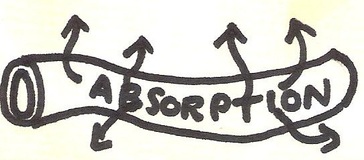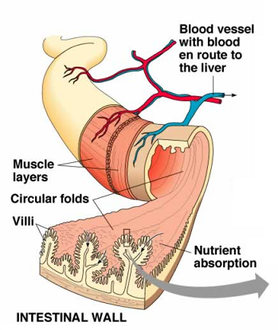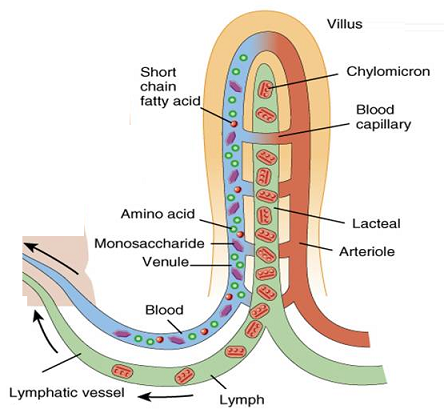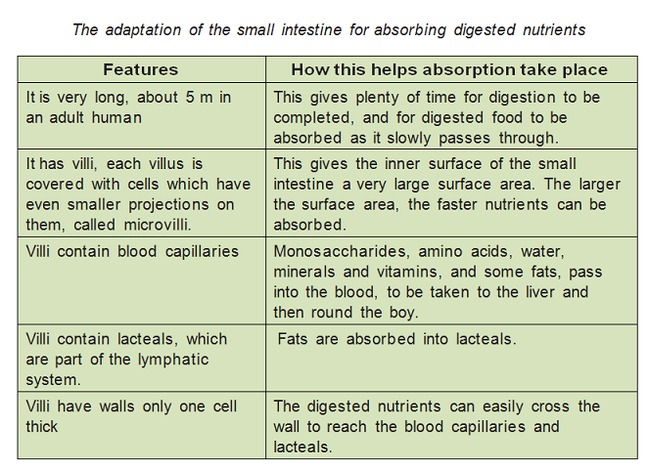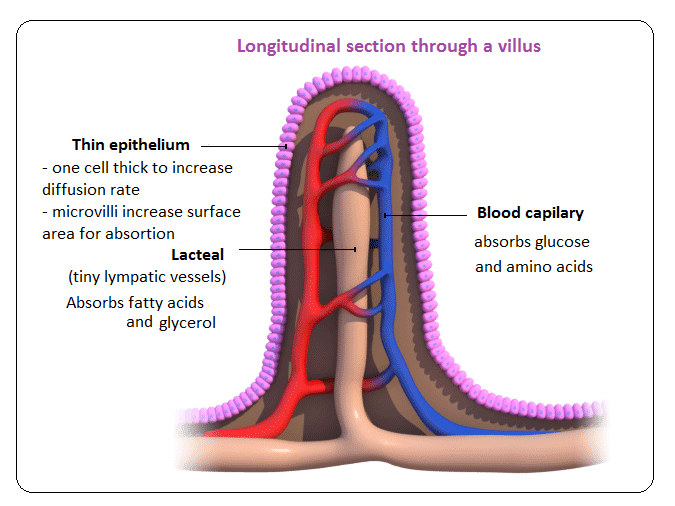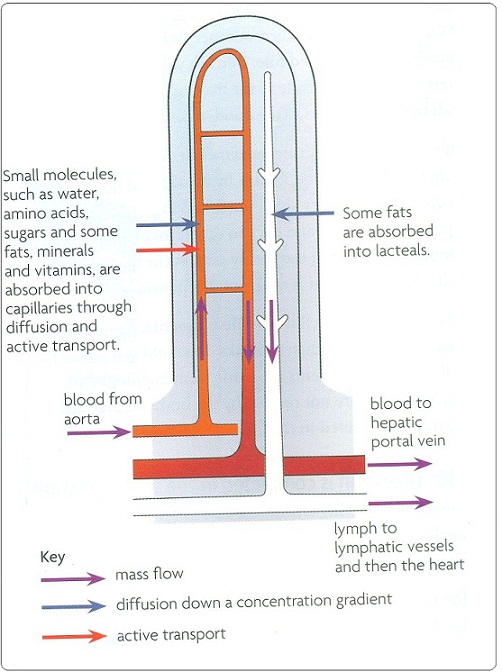# 56 Absorbtion – function of the small intestine
and significance of villi
Absorption is the movement of digested food molecules through the wall of the intestine into the blood or lymph.
Digestion is completed in the small intestine. By now, most carbohydrates have been broken down to simple sugar, proteins to amino acids, and fats to fatty acids and glycerol. These molecules are small enough to pass through the wall of the small intestine and into the blood. This is called absorption.
Absorption is movement of digested food molecules through the wall of the intestine into the blood or lymph. The small intestine is especially adapted to allow absorption to take place very efficiently. It has a very rich blood supply. Digested food molecules are small enough to pass through the wall of the intestine into the bloodstream.
Water, minerals salts and vitamins are also absorbed in the small intestine. The small intestine absorbs 5-10 dm3 of water each day. How ever, the colon absorbs much less water and salt than the small intestine, generally around 0,3–0,5 dm3 per day.
Significance of Villii
Villi are finger like projections that increase the surface area for absorption. If a section of small intestine was turned inside out, its surface would be kike a carpet. Inside each villus are:
- Blood capillaries: absorb amino acids and glucose.
- Lacteals: absorb fatty acids and glycerol.
Villi are finger like projections that increase the surface area for absorption. If a section of small intestine was turned inside out, its surface would be kike a carpet. Inside each villus are:
- Blood capillaries: absorb amino acids and glucose.
- Lacteals: absorb fatty acids and glycerol.
Food molecules are absorbed:
- mainly by diffusion.
- or by active transport.
Epithelial cells contain mitochondria to provide energy for absorption against the concentration gradient.
- mainly by diffusion.
- or by active transport.
Epithelial cells contain mitochondria to provide energy for absorption against the concentration gradient.
Role of the hepatic portal vein
The hepatic portal vein transports absorbed food from the small intestine to the liver. After a meal, the blood in this vein contains very high concentrations of glucose and amino acids, as well as vitamins and minerals. The liver reduces levels backs to normal.
The hepatic portal vein transports absorbed food from the small intestine to the liver. After a meal, the blood in this vein contains very high concentrations of glucose and amino acids, as well as vitamins and minerals. The liver reduces levels backs to normal.

